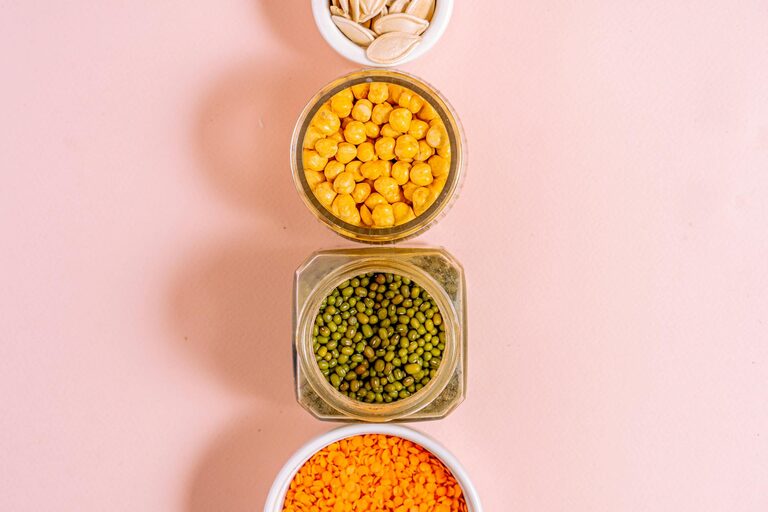When life gets busy, or your grocery trips are limited, pantry staples can be a lifesaver. Knowing how to plan meals around what you already have not only saves money but also reduces food waste and makes cooking less stressful. In this guide, we’ll explore practical tips to help you plan meals from pantry staples, ensuring your kitchen is always ready for tasty and satisfying dishes.
What Are Pantry Staples?
Pantry staples are non-perishable foods kept in your kitchen that form the foundation of many meals. These items typically include:
– Dried grains like rice, pasta, quinoa
– Canned goods such as beans, tomatoes, and vegetables
– Baking basics like flour, sugar, and baking powder
– Oils and vinegars
– Spices and seasonings
– Broths or bouillon cubes
– Nut butters and jarred sauces
Having a well-stocked pantry lets you mix and match ingredients and create meals without needing last-minute shopping.
Benefits of Meal Planning with Pantry Staples
- **Cost-effective:** Using what you have reduces impulse buys.
- **Convenient:** Less time spent deciding what to cook.
- **Reduces waste:** Using pantry goods before expiry cuts down on food waste.
- **Flexible:** Encourages creativity with ingredients and recipes.
- **Healthier choices:** Planning helps avoid processed convenience foods.
Step 1: Assess Your Pantry
Before planning meals, take inventory.
– Set aside 10-15 minutes to list all items you have.
– Note expiry dates to use items soon to avoid spoilage.
– Group items by category (grains, canned foods, spices).
– Identify protein sources (canned beans, canned tuna, nuts).
– Check for frozen goods that can supplement pantry items.
Knowing what’s on hand is key to creating workable meal plans.
Step 2: Plan Meals Around Core Ingredients
Focus on versatile staples that can be combined easily.
Examples:
– Beans + rice + spices = hearty bean bowl or burrito filling.
– Pasta + canned tomatoes + olive oil + garlic = classic tomato pasta.
– Canned chickpeas + curry powder + coconut milk (if available) = chickpea curry.
– Lentils + broth + vegetables = filling lentil soup.
Try to build meals using 3-5 core ingredients to keep things simple.
Step 3: Use Simple Recipes to Guide Planning
Having a few go-to recipes based on pantry items makes meal prep easier. Here are some easy ideas:
1. Chili Bean Stew
– Canned beans (kidney, black, or pinto)
– Canned diced tomatoes
– Onion and garlic powder
– Chili powder and cumin
– Serve over rice or with bread
2. Pasta Aglio e Olio
– Pasta
– Olive oil
– Garlic (fresh or powdered)
– Red pepper flakes
– Parsley or dried herbs
3. Chickpea Salad
– Canned chickpeas
– Olive oil and vinegar dressing
– Canned corn or diced bell peppers
– Salt, pepper, lemon juice or dried herbs
4. Lentil Soup
– Dried or canned lentils
– Broth or bouillon cubes
– Canned tomatoes or carrots
– Onion powder, salt, and pepper
These meals require minimal fresh ingredients but are flavorful and filling.
Step 4: Supplement Pantry Staples with Fresh or Frozen Items
While pantry foods are the base, fresh or frozen vegetables and proteins improve nutrition and taste.
– Frozen veggies like peas, spinach, mixed vegetables keep well.
– Fresh garlic or onions boost flavor.
– Eggs or cheese can add protein and richness.
Keep a small stock of fresh basics and frozen items to add variety.
Step 5: Batch Cook and Store Meals
When planning meals from pantry staples, consider cooking in larger batches.
– Make big pots of soup, stew, or chili.
– Divide into portions and freeze or refrigerate for later.
– Batch cooking saves time and ensures you have ready-to-eat meals.
Step 6: Keep Your Pantry Organized
An organized pantry makes meal planning simple.
– Use clear containers or label cans and jars.
– Store frequently used items at eye level.
– Group similar items together.
– Rotate stock, placing newer items behind older ones.
This organization reduces the chance of forgotten or expired foods.
Tips for Success
– Keep a running list of pantry basics to replenish regularly.
– Experiment with spices to keep dishes exciting.
– Don’t hesitate to substitute based on what you have.
– Use online recipe search tools that allow ingredient-based searches.
– Set aside a weekly time to review your pantry and plan meals.
Conclusion
Meal planning from pantry staples is a practical way to enjoy homemade meals without last-minute shopping or stress. By knowing your pantry contents, using simple recipe frameworks, supplementing with fresh or frozen items, and keeping organized, anyone can create delicious and nutritious meals consistently. Start with a small assessment of your pantry today, and you might be surprised how many creative dishes await!
—
Have you tried planning meals from your pantry? Share your favorite recipes or tips in the comments below!

